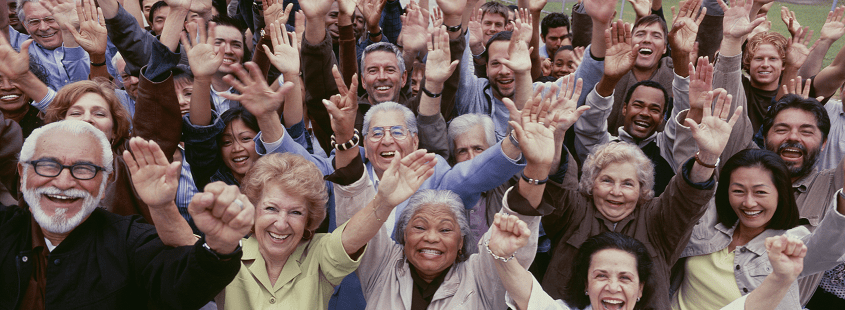by Bruce DeBoskey, The DeBoskey Group
Today, the U.S. population includes nearly 50 million adults over the age of 65. Members of this demographic control substantially greater assets and net worth than any younger generation.
According to the Federal Reserve, the average net worth for Americans age 65-74 is $1,066,000. The median net worth is $224,000. The U.S. Census Bureau estimates that by 2060, the population over 65 will nearly double to 98.2 million.

Many older Americans are able to shift their focus from income creation to asset preservation, retirement and a more relaxing lifestyle. They often increase their giving and volunteering — with enormous benefits for society and themselves as well.
Today’s retirees are almost six times more likely to define success by their generosity (85 percent) than by their wealth (15 percent). Retirees who give are more likely than their less-generous counterparts to report high levels of happiness and a sense of purpose.
Voluntarism Enhances Happiness, Health
Millions of older adults volunteer their time to help other people or a specific cause. They report:
- An improved sense of well-being (89 percent)
- Lower stress levels (73 percent)
- Better physical health (68 percent)
- Enhanced emotional health (77 percent)
- Enriched sense of purpose in life (92 percent)
- Increased happiness (96 percent)
Moreover, volunteering frequently to help others is associated with delayed mortality among older adults, according to a Stanford University study.
“When the happiness, security and well-being of others become real to us, we come into our own,” said Dr. Stephen Post, a professor of preventive medicine and bioethics at Stony Brook University School of Medicine. “Creativity, meaning, resilience, health and even longevity can be enhanced as a surprising byproduct of contributing to the lives of others. This is perennial wisdom, and science now says it is so.”
Questions to Guide Older Americans
Seniors who are considering philanthropy should ask themselves a series of important questions, including:
- How much of my net worth is needed to adequately take care of myself and any dependents for the rest of our lives?
- How much do I want to leave for my heirs, keeping in mind the apt words of Warren Buffet: “Enough so that they would feel they could do anything, but not so much that they could do nothing”?
- How do I wish to be remembered? What is my legacy?
- What difference do I want to make in my community, nation or world while I am still in a position to do so?
- What skills do I have that might be useful to others?
- How do I wish to share and express my values with my children and grandchildren?
- What am I passionate about?
- What kind of philanthropic efforts could help me achieve a greater sense of significance in my life?
- Can an expert in wealth management, tax and estate planning, or philanthropic strategy help me answer any of these questions?
Millions Still Struggle
When acting on a desire to be generous, elders can be susceptible to fraud. They should ignore both telephone and front door solicitations and should reject random email and internet donation requests. Before volunteering, they should question a nonprofit’s need, safety and training to assure an experience that benefits both the volunteer and the organization.
Despite the relative affluence of older Americans, there are millions more who struggle to make ends meet and for whom traditional charity is not an option. Based on the official poverty threshold of $11,756 for people ages 65 and older in 2017, the number of older adults in poverty was 4.7 million (9.2 percent). This number rises to 7.2 million (14.1 percent) based on the alternative (and more accurate) Supplemental Poverty Measure threshold.
Under both measures, the poverty rate among people ages 65 and older is higher for women, black and Hispanic adults, and people in relatively poor health. A staggering 42 percent of older Americans (21.4 million) live with less than 200 percent of the SPM poverty threshold.
For those in a more comfortable financial position, however, charitable activities in the last third of life can have tremendous meaning and value. “One thing I know,” said Albert Schweitzer, “the only ones among you who will be really happy are those who will have sought and found how to serve.”
This article was originally posted on April 14, 2019 on www.deboskeygroup.com . Bruce DeBoskey, J.D., is a philanthropic strategist working across the U.S. with The DeBoskey Group to help families, businesses and foundations design and implement thoughtful philanthropic strategies and actionable plans. He is a nationally syndicated newspaper columnist of “On Philanthropy” and a frequent keynote speaker at conferences and workshops on charitable giving. The DeBoskey Group is part of AEF’s Philanthropic Advisory Firm Referral Program.